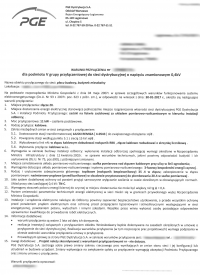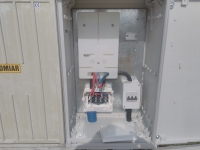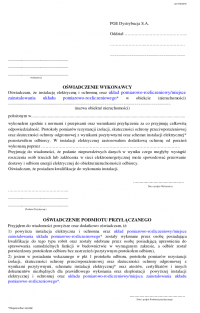Hello,
I need to connect the RB switchgear for construction purposes.
When it comes to electrical qualifications, of course I have them (up to 15kV), but I have never worked with this type of installations so I would like to make sure that what I do is correct.
I attach the connection conditions below:

As you can see, the network is in the TN-C system, and the contents of the ZK box look like this:

On the right there is a countdown protection, and in the box on the left, if I understand correctly, I have to lead with this blue conduit my cable from the RB switchgear and plug in the terminals.
In the RB switchgear, of course, 3-phase differential protection and overcurrent protection. In addition, the division of PEN into PE and N through a driven spike into the ground.
I need to connect the RB switchgear for construction purposes.
When it comes to electrical qualifications, of course I have them (up to 15kV), but I have never worked with this type of installations so I would like to make sure that what I do is correct.
I attach the connection conditions below:

As you can see, the network is in the TN-C system, and the contents of the ZK box look like this:

On the right there is a countdown protection, and in the box on the left, if I understand correctly, I have to lead with this blue conduit my cable from the RB switchgear and plug in the terminals.
In the RB switchgear, of course, 3-phase differential protection and overcurrent protection. In addition, the division of PEN into PE and N through a driven spike into the ground.



